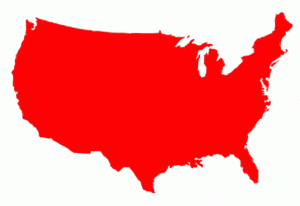
USA
People from all over Europe followed the temptations of the so called “New World”, among them many from Ireland and Scotland. The Scottish and Irish immigrants brought their extensive knowledge of whiskey production with them and adjusted the manufacturing processes to the environment of their new home. That is the reason why in the 18th century the first ever produced Whiskey on American soil (Pennsylvania) was made out of Rye – the birth of “American Rye Whiskey”. Bourbon Whiskey owes its name to the Bourbon Country, Kentucky. The Country in turn was named after the French royal house of Bourbon to thank them for their support during the Revolutionary War.
As mainly corn was grown in the region, this is also the main component of Bourbon Whiskey. Since 1909 Bourbon must be made up of at least 51 percent corn (the share of corn in today’s Bourbon is around 70 percent on average). The proportion of the other cereals in the production of Bourbon can vary. In contrast to the European Whisk(e)y, which must be stored in casks for at least three years, Bourbon must be stored only for at least two years in casks. But those casks must be made exclusively up of American white oak which are burned out before they get filled. There are also differences in production: Unlike his counterparts from Scotland or Ireland, sour mash (without sugar) is used in the Bourbon fermentation process. According to the law it is not allowed to distill the spirit to more than 80% ABV and the spirit must have 62,5% ABV or less when filled into the cask. The law also prohibits the usage of dye stuffs. The result is a smooth and mellow Whiskey with sweet vanilla flavors.
Prohibition between 1919 and 1933 led to a substantial distillery dying in the whole country. Thus nowadays there are only around a dozen active distilleries left in Kentucky whom are still producing Bourbon. But it must be considered that Whiskey with the designation “Bourbon” can also be used from distilleries which do not have their location in Kentucky but in other federal states. Only a designation like “Kentucky Straight Bourbon” gives information over the fact that the Bourbon comes actually from this area.
Tennessee Whiskey is essentially comparable with Bourbon since the same legal defaults concerning the alcohol strength and the maturation time are valid. The relevant difference between both consists in the fact that Tennessee Whiskey is filtered through a large wood tank filled with sugar maple charcoal during its making. This filtering procedure is called “Lincoln Country Process” and was invented by the world-famous Jack Daniels. Besides Jack Daniel’s the George Dickel distillery is the only bigger distillery which survived the Prohibition in Tennessee.
The spicier and more complex Rye Whisky celebrates some kind of revival in recent decades after not a single one of the mainly in Pennsylvania and Maryland located Rye distilleries survived the Prohibition. Furthermore “White Dog” and “Moonshine” bottlings as well as limited bottlings (“Single Barrel, “Small Batch”), Straight Wheat Whiskey and Straight Corn Whiskey are rising in popularity.
Copyright © 2025 | MH Magazine WordPress Theme by MH Themes
